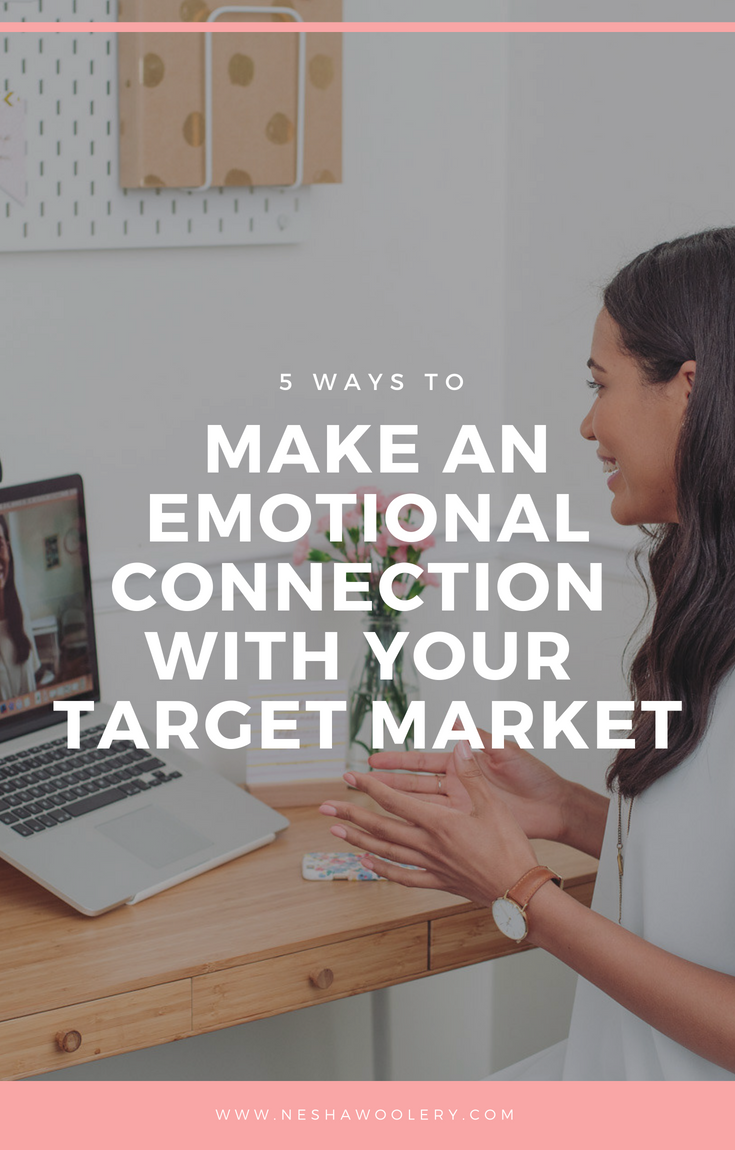Branding.
That word is thrown around the blogsphere a lot these days, but many people misunderstand what it means. Some people think branding is just a visual brand identity made up of a logo, color palette and type combinations. But that's only a part of what your brand truly is.
'Branding demands commitment... Striking chords with people to stir their emotions.' - Sir Richard Branson, CEO of Virgin.
'Your brand is what people say about you when you're not in the room.' - Jeff Bezos, Founder of Amazon.
There are so many ways to define branding, but I like to think of it like this: your brand is what people think of when they hear your brand name. It's how people feel when they think of you, visit your website, hire you, learn from you or walk into your shop.
How your brand makes someone feel can often be the difference between booking a client or losing them to a competitor. {Click to tweet}
Clients and consumers are almost always willing to pay more to the brand that makes them feel something, and that should always be your brand. {Click to tweet}
Story time
Last year I went shopping for a leather jacket. I looked in standard high street shops like Topshop and found decent jackets for £40-80. These jackets were perfectly adequate. Even though they weren't real leather, they looked great!
But then I walked into Allsaints. Ah, Allsaints. The shop front is distressed and rustic, and the inside of the shop has vintage mannequins everywhere, red-brick walls, copper and steel furnishings and the coolest-looking staff you will ever see. You feel sexy when you walk into Allsaints. You don't care that their leather jackets cost £300+ because they make you feel like a badass that just walked right out of a Fast & Furious movie when you're wearing one.
My point?
I splashed £300 on a leather jacket when I could have purchased a similar jacket, albeit fake leather, for 1/5 of the price. I purchased from Allsaints because of the way they made me feel. I wasn't shopping for a leather jacket that day, I was shopping for a feeling. Allsaints gave that to me.
Nowadays we're bombarded with brands all the time; so many that our brains can't handle it! In order to stand out and get our potential clients to listen to us, we have to make an emotional connection through our brands and our website presence. But that's easier said than done, right?
5 ways to connect with your target market
1. Brand style. As you read about my experience with Allsaints, their brand style played a big part in why I chose to purchase from them instead of Topshop. Allsaints had a brand aesthetic that immediately made me feel cool and sexy. Their brand has a unique style that stirs certain emotions within their customers.
When you're trying to emotionally connect with your target market, you'll never form a true connection if your brand style isn't cohesive or isn't an authentic representation of you.
Ask yourself- how do you want people to feel when they come into contact with your brand? What emotions do you want to stir within your ideal clients? Does your current brand identity convey these emotions, or is it failing to connect with your target market in some way? Maybe you need to invest in a rebrand, or maybe you can make some small tweaks to connect with your audience more?
If you need help creating a cohesive brand experience that will make sure your ideal clients fall in love with your brand, check out the free bonus at the end of this article!
Related post: How to build a strong brand on a small budget
2. Brand voice. Your brand voice goes hand in hand with your brand aesthetic. Your brand voice is how you talk and write; how your words make your target market feel. Small businesses that write in a friendly and 'human' voice usually connect easier with their target market because they seem real! People don't want to do business with someone who talks to like a robot and has no sense of personality, they want to do business with a real person.
3. Use of words. When you research what your target market wants from you (usually within a survey), it's important that you use the words and phrases they use. It will make a much better emotional connection when they come to read about your services! For example, this year I wanted to buy a book on money mindset. I found a woman who specialized in this field but her product page used robotic 'professional' phrases that I would have never used to describe what I was looking for. Then I found another website that described my struggles and my desires exactly how I would describe them, in a casual and understandable way. Because this website used words and phrases I'd use- phrases I understood and completely resonated with- I didn't hesitate to purchase from them and not the other woman.
Related post: 10 tools and apps I use for freelancing
4. Brand consistency. Is your brand cohesive and consistent across all areas of your web and print presence? It's important that your brand style stretches across all areas of your brand, not just your website. The look and feel of your website needs to be the same on your Facebook, Twitter and Instagram pages, your business cards, your shop front, your client documents and more. When your brand is perfectly consistent, your target market sees you as a strong brand that really knows what they're doing.
5. Keep your business simple and streamlined. Even if you build an emotional connection through all of the points listed above, that connection can be broken instantly if your business processes are not simple and easy for your customers/clients. What exactly do I mean? Well, a potential client may look at your website and feel totally connected to you; eager to start working with you. But if they contact you and your processes are sloppy, your reply times are slow and your system isn't clear then that connection will immediately break. Keep your customer connected by streamlining your systems. Make doing business with you feel like a guilty pleasure!
I recently enrolled in Leah's course, Stress Less & Impress, and it totally transformed my business systems and processes! I was already doing a lot of what she suggested, but her tips and videos helped me refine my process even more. I highly recommend checking it out if you need help streamlining your business!











